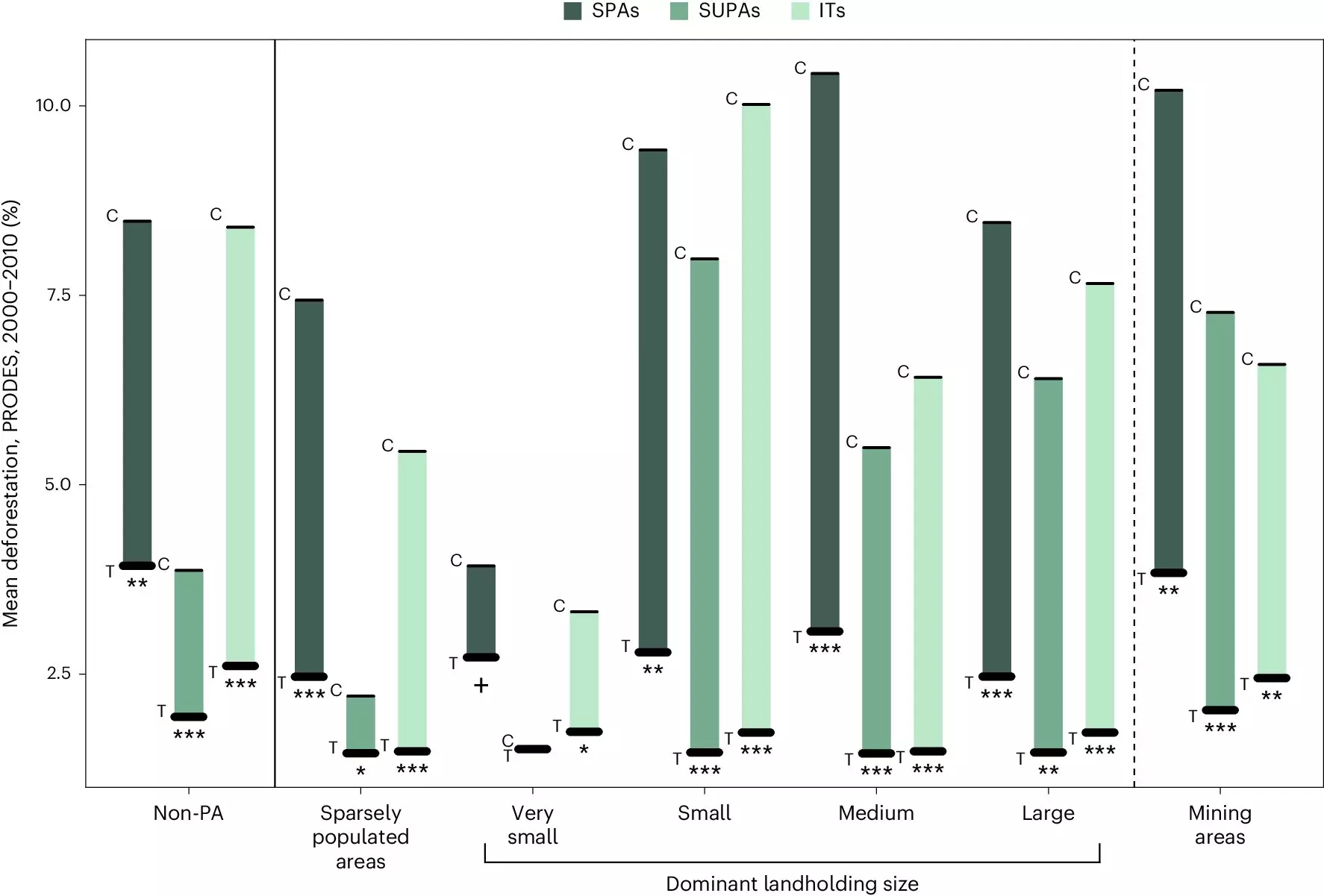Land protection initiatives in the Brazilian Legal Amazon (BLA) have been shown to significantly reduce deforestation rates in the region. Between 2000 and 2010, these initiatives led to a reduction in deforestation by up to 83%, highlighting the crucial role of land protection policies in achieving conservation goals. However, recent data indicates that despite these efforts, deforestation is still a pressing issue in the Amazon, with 5,000 square kilometers of rainforest lost in 2023 alone. This calls for more ambitious solutions to address deforestation and biodiversity loss in the region.
While land protection initiatives have proven to be effective in preserving the Amazon’s biodiversity, a new study reveals that they may come with hidden socio-economic costs for Indigenous communities. The research shows that incomes in Indigenous Territories were up to 36% lower compared to other land uses, shedding light on the trade-offs decision-makers need to consider when implementing conservation projects. This emphasizes the need for a holistic approach that takes into account both environmental and socio-economic impacts when designing land protection policies.
Researchers examined three types of protection arrangements in the Amazon to evaluate their effectiveness and potential trade-offs. These included Indigenous Territories (ITs), strict protected areas (SPAs), and sustainable use protected areas (SUPAs). While ITs return ancestral land and resources to Indigenous peoples, SPAs offer high levels of protection from human disturbance, and SUPAs allow for sustainable use of natural resources. By comparing outcomes across protected and unprotected areas, the study provides insights into the impacts of different land use management decisions on both people and the environment.
Challenges Faced by Indigenous Communities
Indigenous people in Brazil are among the most marginalized groups, with a significant portion living below the poverty line. The study highlights the importance of addressing socio-economic disparities faced by Indigenous communities, especially in the context of land protection initiatives. Efforts to secure land rights must be accompanied by additional support programs to ensure that these communities are not further disadvantaged. Access barriers to social protection programs need to be removed to empower Indigenous peoples and bridge the gap between conservation and development goals.
Policy Implications and Recommendations
The findings of the research suggest that while rights to land and resources are crucial for Indigenous peoples, they may not be sufficient to promote sustainable development. Policymakers need to carefully weigh the benefits and drawbacks of different land use options to maximize progress towards conservation and development goals. Efforts to protect biodiversity in the Amazon should prioritize Indigenous territories, as they play a significant role in preventing deforestation and preserving valuable ecosystems. It is essential to recognize and support Indigenous land claims, especially in the face of potential legal challenges that could limit their rights in the region.
Land protection initiatives have shown promising results in reducing deforestation in the Brazilian Legal Amazon. However, these efforts must be accompanied by measures to address socio-economic inequalities faced by Indigenous communities. By adopting a balanced approach that considers both environmental and social impacts, policymakers can ensure that land protection initiatives in the Amazon are effective and sustainable in the long run.


Leave a Reply